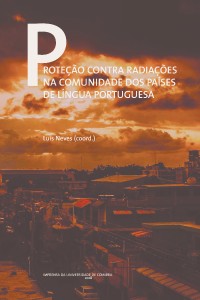Please use this identifier to cite or link to this item:
https://hdl.handle.net/10316.2/44445| DC Field | Value | Language |
|---|---|---|
| dc.contributor.author | Vieira, J. W. | |
| dc.contributor.author | Cabral, M. O. M. | |
| dc.contributor.author | Andrade, P. H. A. | |
| dc.contributor.author | Neto, V. Leal | |
| dc.contributor.author | Lima, V. J. M. | |
| dc.contributor.author | Filho, J. M. Lima | |
| dc.contributor.author | Lima, F. R. A. | |
| dc.date.accessioned | 2018-11-05T16:06:06Z | |
| dc.date.accessioned | 2020-09-05T07:51:57Z | - |
| dc.date.available | 2018-11-05T16:06:06Z | |
| dc.date.available | 2020-09-05T07:51:57Z | - |
| dc.date.issued | 2018 | - |
| dc.identifier.isbn | 978-989-26-1602-5 (PDF) | |
| dc.identifier.isbn | 978-989-26-1601-8 | |
| dc.identifier.uri | https://hdl.handle.net/10316.2/44445 | - |
| dc.description.abstract | Exposure Computational Models (ECMs) use phantoms coupled to Monte Carlo (MC) codes and simulators of emitting sources of electrons, positrons and photons in order to estimate the absorbed dose by radiosensitive organs of exposed individuals to radiation. Recently the Grupo de Dosimetria Numérica (Group of Numerical Dosimetry - GDN) have used 3D modeling techniques in the production of phantoms and have developed techniques to voxels conversion. This paper presents the methodology which allowed the voxelization of the mesh phantom named MARIA (Modelo Antropomórfico para dosimetria das Radiações Ionizantes em Adultas/ Antropomorphic Model for dosimetry of the Ionizing Radiation in Adult woman). The MARIA was developed with Autodesk 3ds Max and exported as an OBJ file type which contains the primary data of this work. 3D objects (surfaces) were converted into voxels type objects (volumetrics) in order to couple MARIA to EGSnrc MC code. Techniques have been implemented to the DIP software (Digital Image Processing) to: 1) Read an OBJ file and convert it to TXT containing only the vertices and faces of the mesh version. 2) Read the TXT file and create (for each organ/tissue present) a stack of slices on SGI (RAW + header) format. 3) Merge SGI files containing structures that do not overlap, bone structures and structures with contours and contents. 4) Create a single SGI file merging the previous item files with priority order based on the volume of organs/tissues. The final voxelized version of the MARIA phantom is available on the GDN’s page (http://dosimetrianumerica.org/). | eng |
| dc.description.abstract | Modelos Computacionais de Exposição (MCEs) utilizam fantomas acoplados a códigos Monte Carlo (MC) e simuladores de fontes emissoras de elétrons, pósitrons e fótons para estimar a dose absorvida por órgãos radiossensíveis de indivíduos expostos às radiações. Recentemente o Grupo de Dosimetria Numérica (GDN) tem utilizado técnicas de modelagem 3D na produção dos fantomas e desenvolvido técnicas de conversões para voxels. Neste trabalho é apresentada a metodologia que permitiu a voxelização do fantoma mesh MARIA (Modelo Antropomórfico para dosimetria das Radiações Ionizantes em Adultas). A MARIA foi desenvolvida no Autodesk 3ds Max e exportada como um arquivo do tipo OBJ, que contém os dados primários deste trabalho. Para acoplá-la ao código MC EGSnrc objetos 3D (superficiais) foram convertidos em objetos do tipo voxels (volumétricos). Foram implementadas técnicas ao software DIP (Digital Image Processing) para: 1) Ler um arquivo OBJ e convertê-lo para TXT contendo apenas os vértices e as faces da versão mesh. 2) Ler o arquivo TXT e criar, para cada órgão/tecido presente, uma pilha de fatias em formato SGI (RAW+cabeçalho). 3) Unir arquivos SGI contendo estruturas que não se sobrepõem, estruturas ósseas e estruturas com contornos e conteúdos. 4) Criar um único arquivo SGI unindo os arquivos do item anterior com ordem de prioridade baseada no volume dos órgãos/tecidos. A versão final voxelizada do fantoma MARIA está disponível na página do GDN (http://dosimetrianumerica.org/). | por |
| dc.language.iso | por | - |
| dc.publisher | Imprensa da Universidade de Coimbra | por |
| dc.relation.ispartof | http://hdl.handle.net/10316.2/44443 | por |
| dc.rights | open access | - |
| dc.subject | EGSnrc | eng |
| dc.subject | Exposure Computational Model | eng |
| dc.subject | numerical dosimetry | eng |
| dc.subject | 3D modeling | eng |
| dc.subject | digital image processing | eng |
| dc.subject | EGSnrc | por |
| dc.subject | Modelos Computacionais de Exposição | por |
| dc.subject | dosimetria numérica | por |
| dc.subject | modelagem 3D | por |
| dc.subject | processamento de imagens digitais | por |
| dc.title | Uso do software DIP para voxelização de fantomas mesh | por |
| dc.title.alternative | Use of the DIP software for voxelization of mesh phantoms | eng |
| dc.type | bookPart | por |
| uc.publication.firstPage | 27 | - |
| uc.publication.lastPage | 34 | - |
| uc.publication.location | Coimbra | por |
| dc.identifier.doi | 10.14195/978-989-26-1602-5_2 | - |
| uc.publication.section | Capítulo 2 - Dosimetria e instrumentação | por |
| uc.publication.digCollection | PB | por |
| uc.publication.orderno | 2 | - |
| uc.publication.area | Ciências Naturais | por |
| uc.publication.bookTitle | Proteção contra radiações na comunidade dos países de língua portuguesa | - |
| uc.publication.manifest | https://dl.uc.pt/json/iiif/10316.2/44445/201094/manifest?manifest=/json/iiif/10316.2/44445/201094/manifest | - |
| uc.publication.thumbnail | https://dl.uc.pt/retrieve/11017593 | - |
| uc.publication.parentItemId | 55071 | - |
| uc.itemId | 68223 | - |
| item.grantfulltext | open | - |
| item.fulltext | With Fulltext | - |
| Appears in Collections: | Proteção contra radiações na comunidade dos países de língua portuguesa | |
Files in This Item:
| File | Description | Size | Format | |
|---|---|---|---|---|
| uso_do_software_dip.pdf | 196.12 kB | Adobe PDF |  |
Items in DSpace are protected by copyright, with all rights reserved, unless otherwise indicated.
